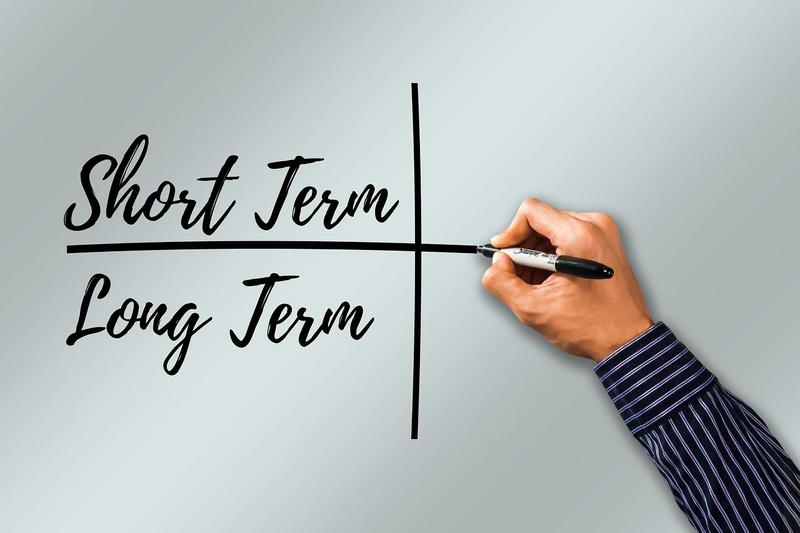Statements such as "we want to increase conversion" are becoming increasingly common. But what does that actually mean? This probably means something like "we want to increase the conversion rate" or "we want to increase the number of conversions". Unfortunately, previous 'goals' still leave a lot of room for interpretation (and short-sighted solutions).
What does 'increasing conversion' mean?
Let's dig a little deeper into this statement. A better understanding of what exactly is meant by this statement can help you communicate more specifically with your conversion specialist or agency.
Increase conversion rate
A simple definition of a conversion rate is: "The number of visitors who take a specific action divided by the total number of visitors." Improving this ratio may feel exactly like what you are looking for when you want to get more results from your webshop. The problem with this, however, is that the conversion ratio can be quite a difficult value to work with. For example, you should take into account the difference between a micro conversion and a macro conversion. Getting more micro conversions seems interesting, but will probably not bring in extra money.
It is also important to realize that the conversion rate is not only influenced by visitors who convert into customers, but also by visitors who do not. The result is that it is easy to improve the conversion rate for many web shops. They can do this by stopping poorly converting channels such as affiliate. This will ensure that less poorly converting traffic comes to the website, which will increase the conversion rate.
Increase amount of conversions
Does this mean that they would like to see the number of orders in their webshop increase per month? No, usually not. You can also achieve more conversions by simply lowering your prices, purchasing more relevant traffic, or publishing a larger amount of content. Increasing the number of conversions therefore does not seem to be the correct explanation.
Generate more revenue
This point actually has the same problem as the one above. Namely that it is not difficult for a well-run webshop to generate more turnover. In most cases this is 'simply' a matter of incurring more costs. With this you can then ensure larger numbers of visitors to the webshop or a higher conversion rate. Unfortunately, such a one-sided approach does not bring in more money. Increasing conversion in this way may bring in more revenue, but it will also cost more money.
Generate more profit
Presumably this will be the most accurate description of what is meant by "we want to generate more turnover or even profit". After all, profit is the difference between income and costs. By not only looking at the income (conversion ratio, number of conversions, turnover) but also at the costs, you get a much better picture of the return on CRO activities.
The goal of conversion optimization in this context is to ensure that not only 'the conversion is increased', but that the following factors are also taken into account (among others):
- Specialists: There are (higher) costs associated with deploying (better) developers, product photographers, managers, marketers, copywriters, etc.
- Optimization: Things like user testing, data analysis, A/B testing and personalization also entail costs.
- Prices: Temporary discounts and lower prices result in more orders, but generate less income per product.
- Learning: Learning more about your visitors costs money, but in the long term it yields more than it costs.
Short term of long term
The above explanation indicates that conversion optimization is a balance between income and costs. But how do you determine which buttons you will turn to improve the webshop? An important decision you have to make is whether conversions should only be improved in the short term or structurally. This involves factors such as the vision on CRO from the organization, support from management, budgets, etc.
Increase conversions in the short term
The question quickly arises: why would you want that? In most cases, the simplest 'solutions' for this are to lower prices or give discounts. As already indicated, this does lead to more conversions, but not necessarily more profit. That said, there are of course scenarios where it is necessary to increase conversions in the short term.
Look for quick wins
Fortunately, tinkering with prices isn't the only solution available. For example, you can have a webshop analysis or user testing carried out in search of quick wins. Especially in web shops where no extensive conversion optimization has yet been done, good points for improvement often emerge. In addition, such analyzes can often be in your inbox within a week, making them suitable for quickly realizing more orders.
Free gift with order
Another alternative could be to give away something of value to the visitors for free. For example, consider samples that you can give as a gift with an order or an ebook for which you normally charge costs. These things have virtually no cost to the company, but may actually help attract a visitor across the border.
Reduce cart abandonment
Research from the Baymard Institute shows that around 68% of online shopping carts are abandoned. In other words, for every 10 customers who add an item to their cart, 7 leave without completing the purchase. E-commerce stores lose an estimated $18 billion in sales revenue annually due to abandoned shopping carts. Some platforms, such as Shopify, recently offer the option to automatically send emails to visitors who have abandoned their shopping cart. Because of the potentially large gains this can have in relation to the very low effort, this can be a very interesting quick win for a webshop.

Structurally increase conversions
If you want to structurally get more conversions, this is a longer process. Not only does this often require more support from management, but matters such as data quality, website optimization tools, and available budgets also become important factors to take into account. In addition to the aforementioned webshop analysis and user testing, other methods will also become available due to the higher budgets and greater support. You can think of interviewing customers, conducting surveys, competitive analyses, visitor behavior analyses, A/B testing, or personalization.
Free and non-binding 1 hour session?
Gain insight into your challenges surrounding CRO
Examples
Although the examples below have led to nice conversion increases in other web shops, this is of course never a guarantee that this will also be the case in your web shop. Therefore, make sure that you always validate best practices with your own research (if possible A/B testing).
- Remove quick view option: Many web shops have a so-called quick view button for each product on the category pages. This allows you to open an inline pop-up where you can find brief information about the product and a button to purchase this product. However, the (possible) problem with this quick view pop-up is that a lot of information about the products is not available. Think of reviews, product details, related products, etc.
- Be transparent about shipping costs: Some webshops only show the shipping costs after the exact location to which the product should be sent is known. Other online shops do not even provide any information about shipping costs. As recent research shows, shipping costs are seen as one of the main disadvantages of e-commerce. Therefore, make sure that you are as clear as possible about your shipping costs as early as possible. Even an estimate of what the shipping costs will be can help.
- Good zoom on product photos: The lack of ability to see products properly is also mentioned as a disadvantage of e-commerce orders. It is therefore important that visitors can at least zoom in on the products they are going to buy. Consider good photos of things such as stitching, materials, colors, etc.
- Add street name and place of residence: It is possible to automatically request the street name and place of residence based on the zip code and house number. This has several advantages. Not only does this prevent possible typing errors from visitors, it also allows you to initially display the form two fields smaller. This can have the effect of making it less intimidating to visitors, meaning a higher percentage of them will complete it.
- Remove coupon code field: Many web shops still choose to show a coupon code field in the shopping cart. However, as described in this extensive blog about coupon codes, there are also other options. For example, web shops can choose to replace the coupon code field with a link. The entry field only becomes visible as soon as a visitor clicks on it. Another alternative is to only work with URLs that are tagged with a coupon code. When a visitor visits the website with such a link, the discount is automatically applied and there is no longer a need for a coupon code field.
Conclusion
There are several ways to look at what increasing your conversions means. You should also consider whether this will be a short-term increase or whether the focus is on structural improvement. Of course, it is also possible to opt for both short-term and long-term solutions. The methods are not necessarily mutually exclusive and can often be used together.





